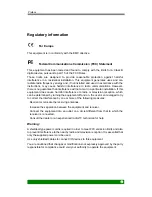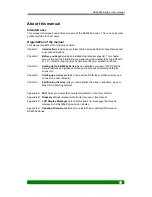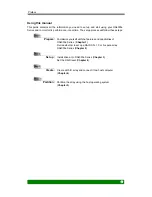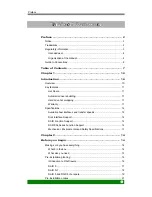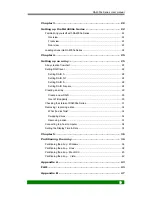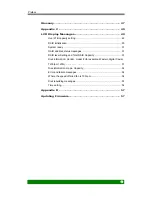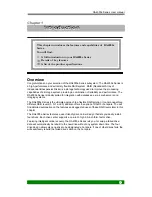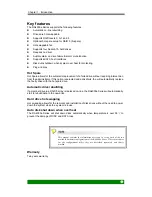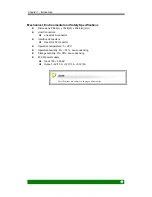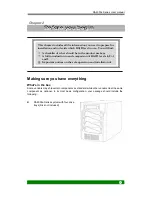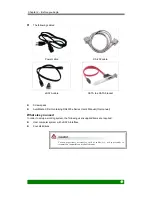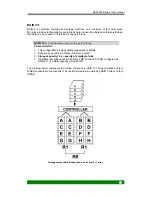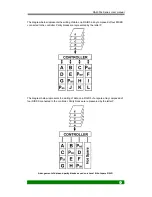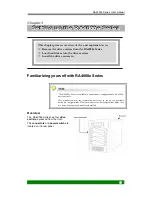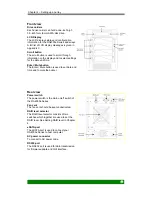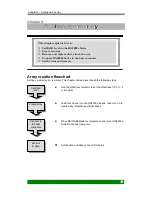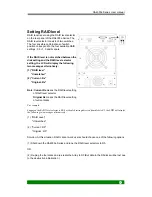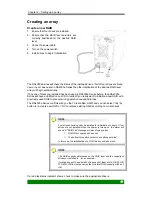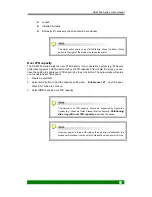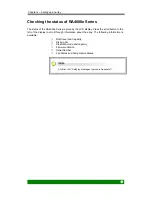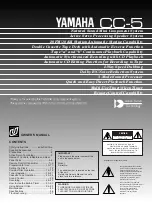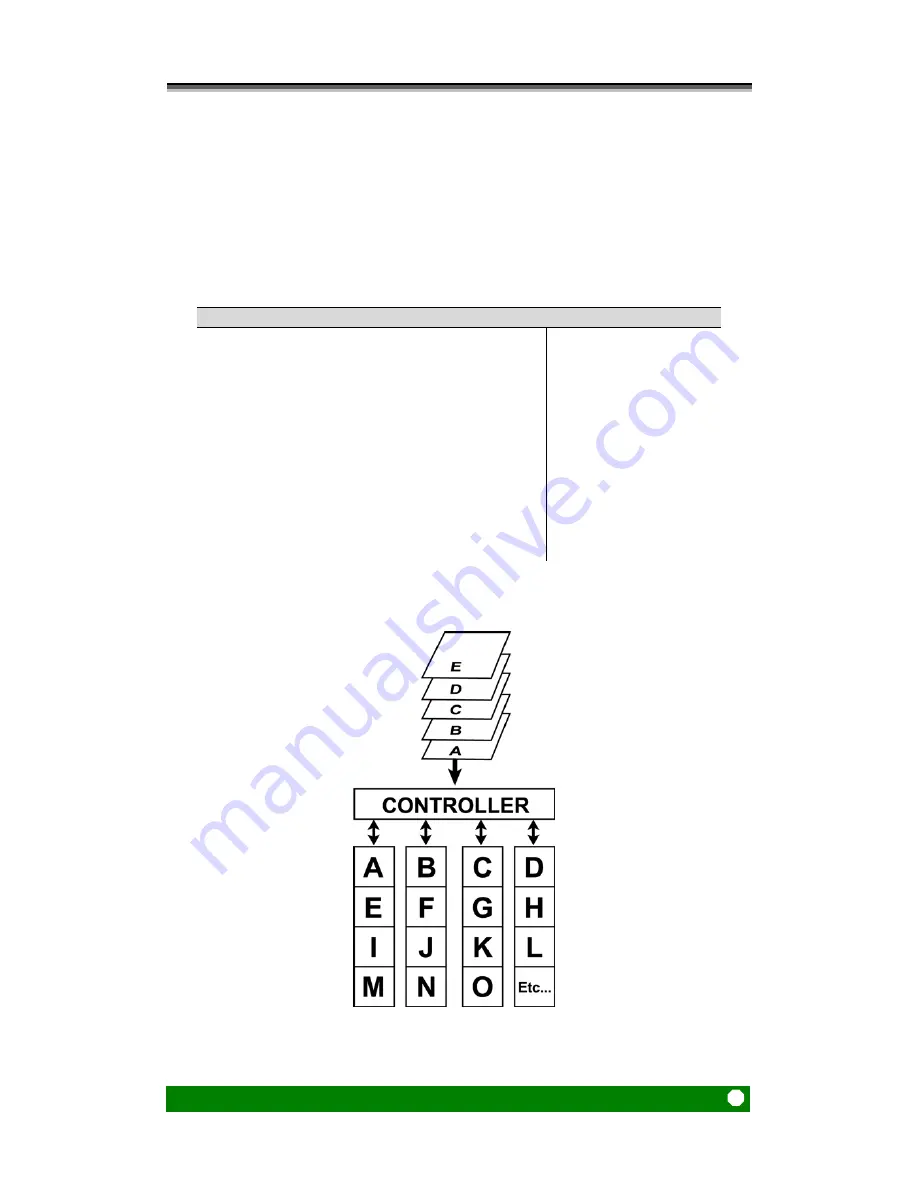
Chapter 2 – Before you begin
17
RAID 0
RAID 0 links each drive in the array as one huge drive. Storage capacity is determined by the
smallest drive in the array. That capacity is then applied to format all other drives in the array.
If using a 40 GB, 50GB, 60 GB, and 70 GB drive in a RAID 0 array, your system will see one
huge drive of 160 GB (40 GB×4).
RAID 0 offers double or more performance under sustained data transfers when one drive per
is used. But RAID 0 without fault tolerance, if one of disks in RAID 0 array fails, the RAID
crashed.
RAID 0:
Striped disk array without fault tolerance
Characteristics: Recommended
use:
RAID 0 implements a striped disk array, the data
is broken down into blocks and each block is
written to a separate disk drive.
I/O performance is greatly improved by spreading
the I/O load across many channels and drives.
Fastest and most efficient array type but offers no
fault-tolerance.
Storage capacity = (No. of disks) × (capacity of
smallest disk)
If installed 40 GB, 50 GB, 60 GB and 70 GB,
configured as RAID 0, the RAID capacity will be
160 GB.
Video production and
editing
Image
editing
Pre-press
applications
Any
application
requiring high
bandwidth
The diagram below represents the writing of data on a RAID 0 array composed of four DISKS
connected to the controller. Data blocks are distributed across all disks in the array.
Arrangement of data blocks saved on a Level 0 RAID

